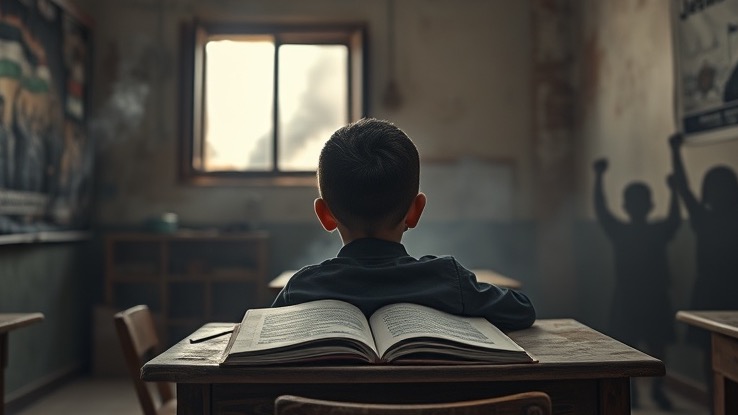
What Education Reveals About Societal Mindset
The conversation surrounding education and its impacts is unfolding vibrantly in the heart of the Middle East. Recent discussions highlight how children in Gaza are instructed to navigate the world with ideologies steeped in hatred, particularly towards Jews. This environment fosters a particular culture where young minds are molded to celebrate violence rather than peace. As David Reynolds poignantly notes, when a child is raised to harbor animosity, it plants deep roots in society that can manifest in devastating ways.
In The Education of Hate: How Indoctrination Shapes the Future of the Middle East, the discussion highlights pivotal issues surrounding how hate is taught to children, prompting a deeper analysis of the implications on societal dynamics.
The Role of Military Perception in Education
An alarming cycle emerges as the education system perpetuates ideals that glorify violence and conflict. The alarming reports of military incursions from Gaza illustrate this reality, with children raised to not only fear or oppose their neighbors but to find pride in acts of aggression. The psychological implications are profound, as these behaviors are cheered on by supporters—showing that indoctrination from an early age generates a continuous cycle of violence and radicalization.
Statistics That Speak Volumes
Recent surveys reveal that 70% of the Arab community in the region still sympathizes with the Palestinian cause, even amidst conflict. This statistic raises troubling questions about coexistence and highlights why true peace remains elusive. If a significant portion of the population continues to foster grievances and hostility, can genuine dialogue and peace ever emerge?
Understanding the Complex Landscape
Amidst these challenges, it’s essential to acknowledge that not all individuals share these radical sentiments. Many Arab leaders and citizens are just as keen on fostering peace and collaboration. It's critical for the international community to recognize the diversity of perspectives and experiences within these populations rather than painting them all with a single brush.
Pathway to Peace: A Unified Vision Required
In light of these realities, Reynolds stresses the need for a vision where both Jews and Arabs can coexist peacefully. The mantra suggests that for there to be two states, there must be a mutual desire to live in harmony—a principle often lost in political rhetoric. Without shared values of peace and cooperation, history indicates that new conflicts will continue to arise.
As we reflect on the insights from The Education of Hate: How Indoctrination Shapes the Future of the Middle East, it becomes clear that education has profound implications—far beyond classrooms. It shapes lifetimes, societies, and ultimately, the future. Therefore, aligning our prayers and actions toward promoting peace, understanding, and mutual respect in such delicate areas is paramount.
For those who share in this vision, contributing to organizations and initiatives promoting peace and understanding in the region is a tangible way to affect change. Understanding the narratives at play can build bridges where walls have long divided.
 Add Row
Add Row  Add
Add 




Write A Comment